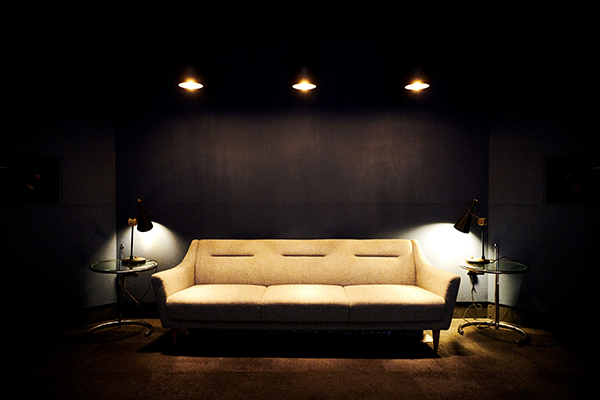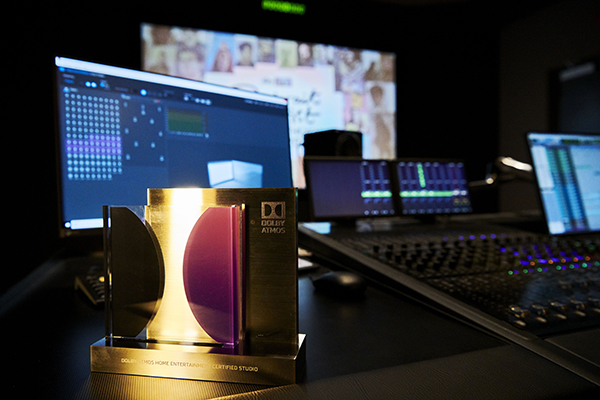Painting a picture: behind the scenes at Sky's new Dolby Atmos mixing studio

This second-generation facility is allowing Sky Arts to spearhead a technical revolution in programme-making and broadcasting that makes 5.1 sound decidedly old hat.
The satcaster is no stranger to innovative applications of Dolby Atmos. Since it first debuted the technology with Premier League football in 2017, productions have included live coverage of the Queen’s Speech, Sky Arts’ comedy/drama Urban Myths and Sky One’s extreme sports game show Revolution. According to audio team manager John Cochrane, the more awareness increases, the more public demand for Dolby Atmos will grow: 'It has a tremendous breadth of applications, there are a lot of shows and genres that can benefit from it.'
HCC was invited in for a sonic preview, and discovered that you don’t need stadium sports or big-budget popcorn adventure to bring home the benefits of Dolby Atmos.

Sky's new studio, a floating room-within-a-room design, is a dream space for AV-hedz. The Dolby Atmos layout is 7.1.4, using bespoke enclosures around and up high. The mixing console itself faces off against a large projection screen.
The installation has usurped a location once occupied by a tape-based edit suite which fell into disuse. 'We had an opportunity to build this late last year and we jumped at the chance,' says Cochrane. 'We’re really proud of it.'
The studio is a certified Dolby Atmos Reference room. 'Essentially this means it’s a room that we know works well within certain parameters, and will map across the many different Dolby Atmos listening environments,' explains Rob France, Senior Manager for Dolby Home Content Engineering.
Reference specifications mandate where the speakers should be located, and the rough size of the environment. 'It’s got to be within specification but you can have some variation,' says France. 'This room is focused on home entertainment. There are different standards for theatrical Dolby Atmos, rooms are generally bigger with more speakers.'
The ability to map the mix down is important. It’s unlikely many viewers of Portrait Artist... would be watching on this calibre of hardware. 'As much as it's a home entertainment room, we wanted to create as close to a theatrical, cinematic feel as we can – and we feel we've done that with the shape and the style of the space,' says Cochrane.
Unusual staging
One of Sky Arts’ flagship titles, Portrait Artist... features contestants competitively painting within a gallery setting – actually the Battersea Arts Club for its 2020 season – amid a live audience.
The unusual staging provides surprisingly broad opportunities to place ambience and hubbub in the height channels. And a breakdown of the sound design shows just how much impact the Dolby Atmos mix has on the listening experience, even without recourse to dramatic effects or gimmicky panning. Played back without Atmos, the show seems somehow less seductive.

There are no guide lines on how to do an immersive mix for this kind of production, explains dubbing mixer Finn Curry, but artful use of the technology allows viewers to really get a sense of the physical scale of the gallery. 'The challenge is how we create that natural sense of space, without doing anything overly dynamic. Sound-wise, it’s about just providing a nice kind of bed for the whole programme to operate on.
'We want to give a gentle feeling of time passing, with lots of various little conversations as people talk about the way they paint or draw. In terms of sound design, it's quite subtle.'
Elements recorded live are used throughout. 'We have a quad wild track recording that was run by the sound recordist throughout the day, so we’ve managed to make essentially a nice constant background sound; but we've also managed to offset that and lift it up a bit, push some reverb.
'We also have the dialogue coming through the heights, at varying levels. In the show, there are points at which there are announcements to start and stop painting by Stephen Mangan and Joan Bakewell. They’re played up high. The music is in a 7.1 bed going through a Nugen Audio Halo upmixer. This gives a very rich feeling.'
One key creative decision faced by the team was how literal to go. 'Yes, there are some technical rules, some dimensions and criteria,' says Cochrane, 'but in terms of what you do and what you think about when you sit down at a console, there’s no rulebook. We’re like any artist with a new set of tools. It's really about your imagination. Do we spend time trying to recreate an environment, or do we concentrate on creating something nicer?'
Curry says the overriding aim was always to stay unobtrusive. 'All the contestants have radio mics, and so we scatter audio from them throughout the show. It's those little elements, along with the recorded atmosphere on set, that help lift the quality of the viewing experience.'
While there's been plenty of time to mix Portrait Artist of the Year, the Sky Arts production of Isle of Wight Festival 2019 was a rare example of live Dolby Atmos music – itself a trickier challenge than a live sports production. However, John Cochrane unearths a secret – if you watched the event as it happened, and then returned to experience it again via the video on-demand version, you wouldn’t have heard the same mix. 'We had time to put a little more production polish into the VOD version...'
Portrait Artist of the Year airs on Sky Arts on January 21 at 8pm.
 |
Home Cinema Choice #351 is on sale now, featuring: Samsung S95D flagship OLED TV; Ascendo loudspeakers; Pioneer VSA-LX805 AV receiver; UST projector roundup; 2024’s summer movies; Conan 4K; and more
|







































